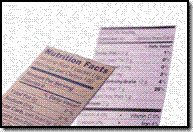Last year, every issue of Beyond the Cab was devoted to the subject of driver wellness. You’d think a new topic would accompany a new year, but not so. Why? Quiet simply, driver wellness is such a pervasive and challenging safety issue that several years could be devoted to the topic and never make the impact that is needed. The most compelling reason to dedicate at least one more year is the fact that, as stated in January 2010, no other safety issue in trucking presents both a direct cause for driver injuries and a factor that increases the costs of recovery. It’s certainly not the author’s intent to sound like a broken record, however this matter is one of central importance and one of the biggest reasons trucking companies cannot ignore the risk associated with failing to address driver wellness.
Driver Wellness Other Safety Issues
A central theme of the 2010 series was to encourage trucking companies to make their wellness efforts more than mere information campaigns. While this theme is still ever present in 2011, this year’s BTCs will provide information and strategies for trucking companies to put into action. In this issue, one specific ideais provided for trucking companies to help drivers and other employees keep – or still make – a New Year’s fitness resolution.
RACE TEAMS: GOAL ORIENTED, TEAM FITNESS ACTIVITIES
The very mention of “group fitness” probably has many in the trucking industry rolling their eyes with skepticism because it’s difficult enough to get drivers together for a safety meeting. However, there are trucking companies who are taking advantage of this type of wellness strategy through driver teams being entered in distance races such as 5Ks, 10Ks, half and even full marathons. Most of the larger cities within the main distribution of BTC, such as Indianapolis, Louisville and Nashville, have multiple races each year where organizations can enter teams consisting of four to five individuals. An additional incentive for trucking companiesto undertake this strategy is that a notable portion of the entry fee for a teamusually goes to a local charity. Team entry fees usuallyrange between $200 and $300.
There aremultiple purposes and underlying strategies for driver teams in local races; and no, transforming your drivers into world-class runners racing for the cash prizes is not one of them. First, being part of a team creates accountability within the team and within the team members themselves. Particularly whena team can train together, the members of the team feel more obligated to pull their weight and certainly don’t want to be absent when the team meets for a group training run. Peer accountability is certainly one of the more proven strategies for improving wellness.
Secondly, race participants, and particularly those competing in races that are ten milesor further, have to stick to a training regimen if they intend to reach their finishing goal. In most cases, race organizers provide free training and diet plans that are fantastic. These plans become an instant recipe for improved driver wellness and employer coaching.
Thirdly, but certainly not least nor last, is the fact that simply completing a race creates contagious motivation. Directly, members of a race team gain aninternal sense of accomplishment that fuels their fire to continue on their journey of health and fitness. Whena team’s accomplishment is celebrated within the company, quiet often other employees are indirectly (or arguably directly) motivated to get in on the action. When a coworker accomplishes a goal such as completing a half-marathon, the “if she / he can do it so can I” factor takes over and pretty soon there are multiple employees wanting to get in on the race. Your author took up running through a team activity in 2008, and at the time of this publication at least four other people have stated that they have taken up running after seeing the weight loss (which was over 50 pounds) and overall fitness improvements. Nothing motivates like someone you can relate to displaying visible results!
Running is just one group or team fitness activity that a company can sponsor. However, running and races certainly take the least amount of equipment and present a pure and simple form of exercise. Furthermore, because most folks can individualize their goals, running allows for a wide variety of individual circumstances and limitations when it comes to participation. Nonetheless, individuals should get medical clearance from a doctor before engaging in race training – just as they should for any type of exercise.
Watch for more information from Midwestern Insurance Alliance about get drivers fit in 2011.
FYI:5K=3.1 miles; 10k=6.2 miles; ½ Marathon=13.1 miles






